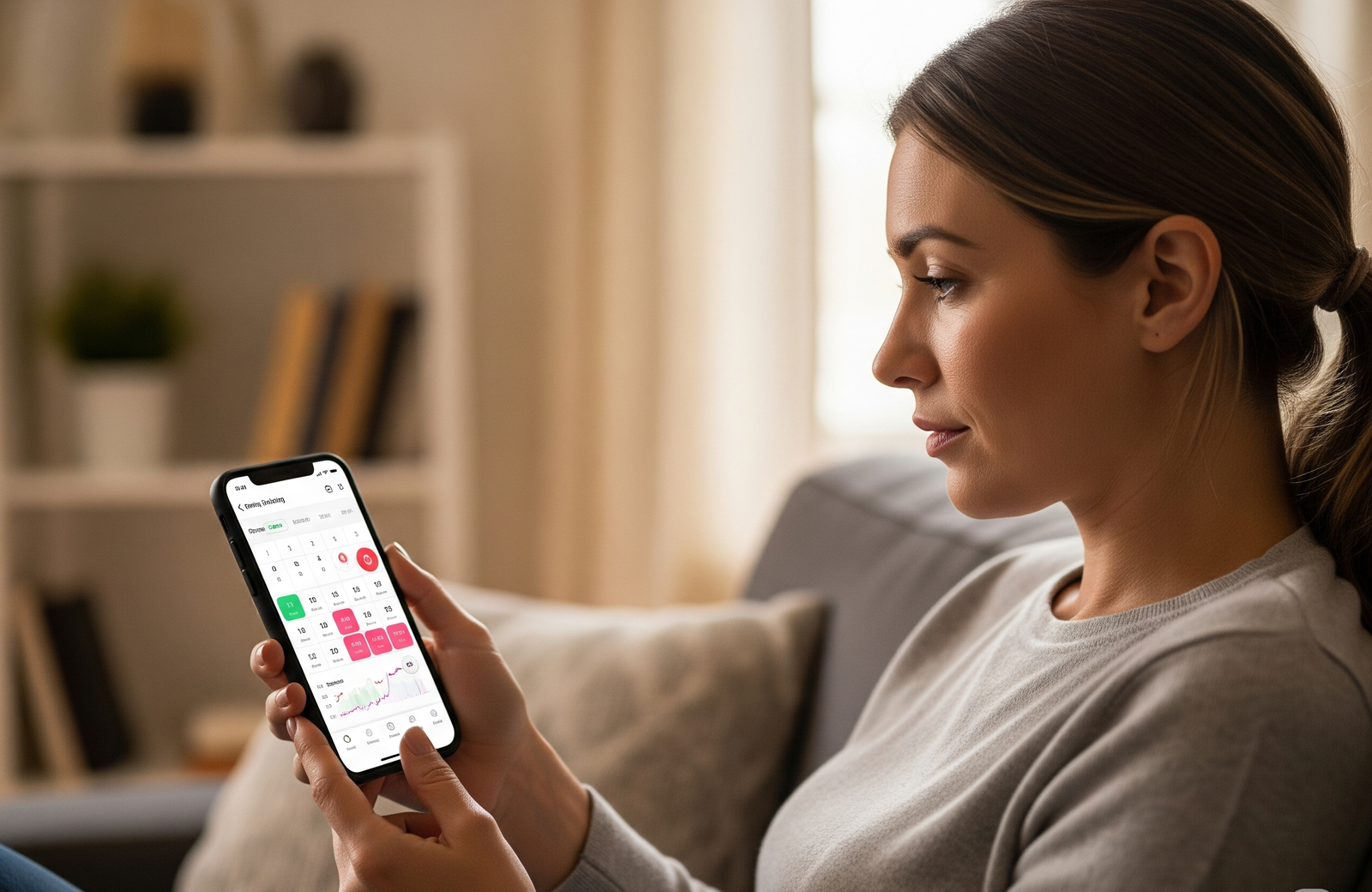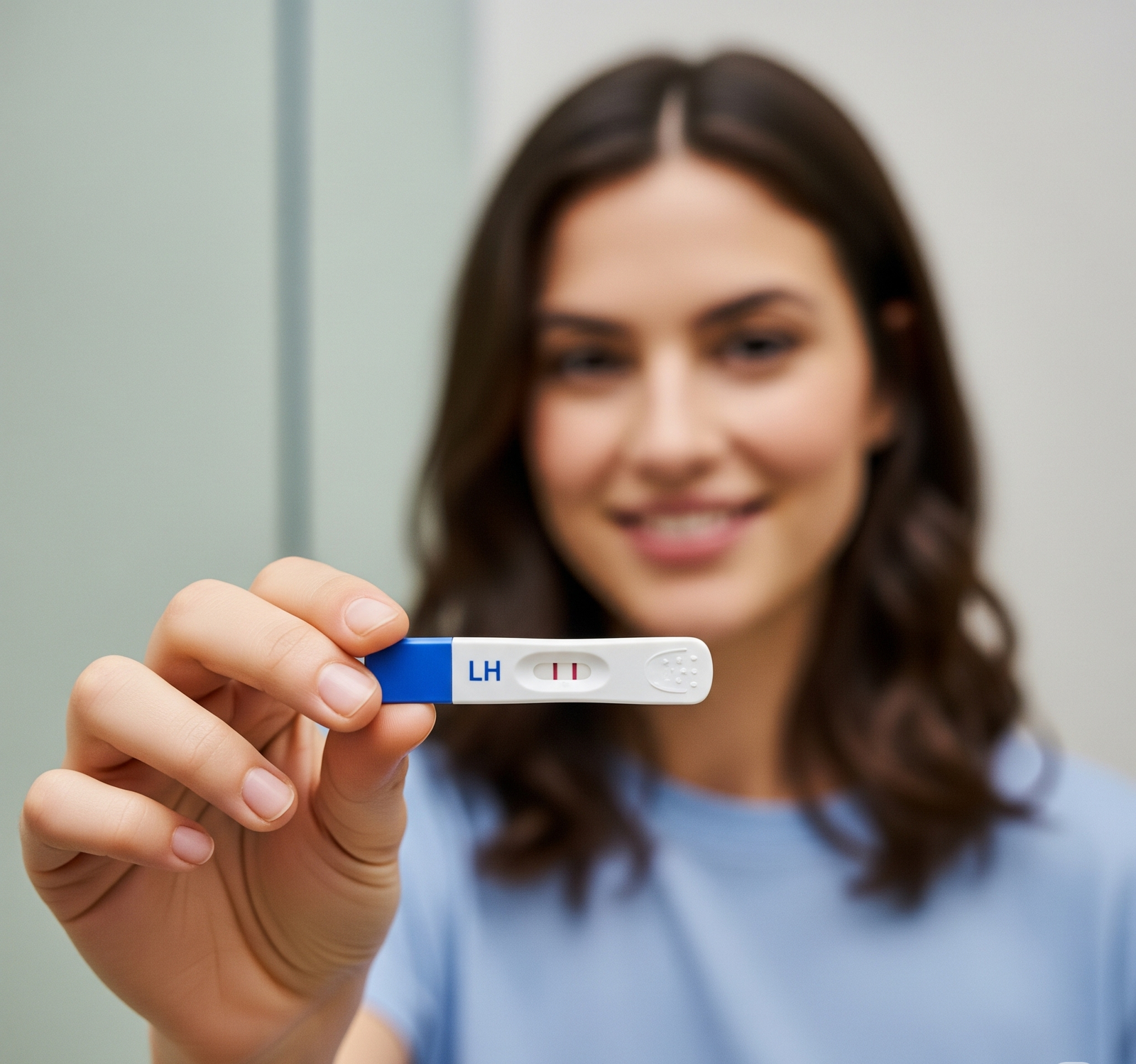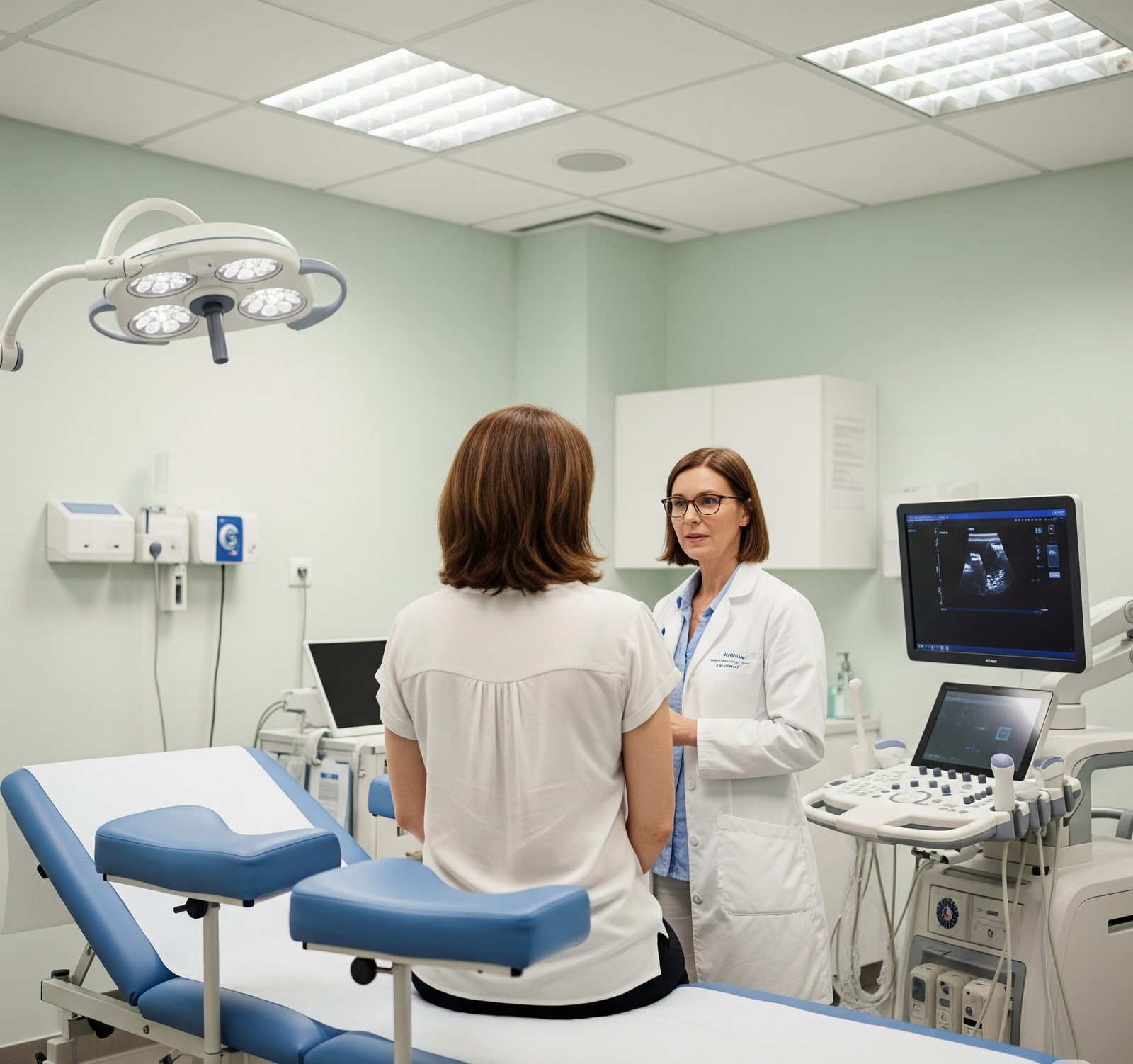I Need to Get Pregnant This Month: Mastering Your Fertile Window
If you need to get pregnant this month, timing is your best ally. Here’s how it works. Pinpointing your fertile window gives you the highest odds of conceiving. Learning your cycle takes just a little effort but can pay off fast.
 Understanding Your Cycle
Understanding Your Cycle
A typical menstrual cycle runs about 28 days, but yours may be shorter or longer. Day 1 is the first day of your period. Ovulation usually happens around day 14 of a 28‑day cycle. If your cycle is 30 days, ovulation may occur on day 16. Knowing your length helps you plan.
To track your cycle:
Mark day 1 each month on a calendar.
Count until your next period to find your cycle length.
Adjust your ovulation estimate based on that length.
Tracking Ovulation

Spotting ovulation signs helps you know when to try. Three simple methods work well:
Basal Body Temperature (BBT)
Take your temperature each morning before getting up.
A small rise (0.4–0.6°F) shows ovulation just happened.
Cervical Mucus
Notice changes in discharge.
Egg white‑like, slippery mucus means you’re fertile.
Ovulation Predictor Kits (OPKs)
Test your urine for an LH surge.
A positive result means ovulation is near.
Optimal Intercourse Timing
Having sex at the right time boosts your chances. Sperm can live up to five days in your body. An egg lives for about 24 hours after release. Aim to have sex:
Two days before ovulation
The day before ovulation
The day of ovulation
This covers the peak fertile window. If you need to get pregnant this month, try every day during this three‑day span.
Research on Rapid Conception

Here’s what three key studies reveal about getting pregnant quickly:
Optimizing Natural Fertility
A committee opinion from the American Society for Reproductive Medicine outlines how to boost natural fertility without a diagnosis of infertility. It covers timing intercourse in the fertile window, age‑related decline, lifestyle factors like smoking and caffeine, diet, and folic acid use. These tips form a broad plan for faster conception (PubMed).Timed Intercourse Benefits
This systematic review evaluates methods to time sex around ovulation—urine tests, temperature charts, mucus checks, and apps. It confirms that having intercourse in the five days before ovulation up to a few hours after can raise the odds of pregnancy and live birth (PubMed).Fertility Awareness Methods (FABMs)
A review of FABMs—from calendar rules to symptothermal approaches—shows that tracking signs like mucus and temperature can pinpoint fertile days. Modern apps and digital tools have improved accuracy, helping couples time sex more effectively (PMC).
Use these evidence‑based strategies to focus your efforts and make this your most fertile month yet.
Lifestyle Tweaks for Speedy Success

When you need to get pregnant this month, small lifestyle changes can make a big difference. Here’s how it works. Adjust your diet, habits, and stress levels to boost your odds fast.
Nutrition and Supplements
Good nutrition fuels your body for conception. Focus on whole foods:
Leafy greens and fruits for vitamins and antioxidants
Lean proteins like beans, fish, and chicken for healthy eggs and sperm
Whole grains for steady energy
Healthy fats from nuts, seeds, and olive oil for hormone balance
Add a daily prenatal vitamin with folic acid. Folic acid supports early fetal development. You can also take 1,000 mg of omega‑3 fish oil to aid egg quality. If you drink coffee, limit it to one cup a day. Swap sugary snacks for fruit or yogurt to keep blood sugar steady.
Exercise and Weight
Your weight affects fertility. Being underweight or overweight can disrupt hormones. Aim for a body mass index (BMI) in the healthy range (18.5–24.9). To get there:
Moderate exercise – brisk walks, cycling, or swimming for 30 minutes a day, five days a week
Strength training – two sessions a week to build lean muscle
Avoid extreme workouts – too much cardio can lower estrogen and stop ovulation
Even small weight loss—5–10% of body weight—can improve ovulation and boost your chances this month.
Stress, Sleep, and Conception
Stress can delay ovulation and lower sperm quality. Aim to manage stress with simple steps:
Deep breathing – 2 minutes of slow inhales and exhales can calm your system
Mindful breaks – pause for a short walk or quiet time when you feel overwhelmed
Gentle yoga – helps lower cortisol and improve blood flow
Sleep is just as vital. Aim for 7–8 hours a night. Keep a regular bedtime. Turn off screens an hour before sleep. A well‑rested body is more likely to ovulate on time.
Environmental and Habits Check
Everyday items can affect fertility. Make these quick swaps:
Skip plastics – swap plastic containers for glass or stainless steel to avoid BPA
Filter your water – remove chlorine and heavy metals that may harm eggs or sperm
Avoid chemicals – choose fragrance‑free soaps and cleaners to limit hormone disruptors
Quit smoking – tobacco lowers egg and sperm quality
Limit alcohol – keep it to one drink or less each week
Small habit shifts today can lead to faster results this month.
Tools, Techniques & Home Insemination

When you need to get pregnant this month, the right tools and methods can speed things up. Here’s how it works.
High‑Tech vs. Low‑Tech Tools
You don’t need fancy gear to track ovulation.
Ovulation apps: These use your data to predict fertile days. They can help you spot patterns.
LH test strips: A low‑cost way to detect your hormone surge. Buy packs of 10–20 tests.
Basal body thermometer: A simple digital or glass thermometer records tiny temperature shifts.
Fertile cervical mucus monitors: Test sticks or color charts show when your mucus is most fertile.
Pick the tools that fit your budget and comfort. You can use just one method or combine two for better accuracy.
Quick‑Action Positions & Retention Tips
Once you know your fertile days, these tweaks can help sperm get closer to the egg:
Position: Try missionary with your hips elevated on a pillow. This angle helps sperm move toward the cervix.
Side‑lying: Lying on one side keeps sperm pooled near the opening. Switch sides halfway through.
Retain: After intercourse, lie still for 15–20 minutes. Keep a pillow under your hips for extra comfort.
These small changes give sperm more time to swim and reach the egg.
Home Insemination Option
If timing intercourse isn’t enough, consider home insemination. You use a clean, needle‑free syringe and a sterile cup to place sperm near the cervix. It can work on your peak days without a clinic visit. For clear, step‑by‑step help on tools, timing, and costs, see the Home Insemination Guide. It walks you through every detail so you can act fast this month.
Bonus Fast‑Track Tip
Some experts suggest that light exercise—like a 10‑minute walk—right before your fertile window may boost blood flow and improve egg release. A short walk the morning of your LH surge can help you stay relaxed and ready.
By choosing the right mix of tools, fine‑tuning your timing, and knowing when to try home insemination, you give yourself every advantage. Use these methods now, and you’ll be set to make this your most fertile month ever.
When to Seek Help & Next Steps

If you need to get pregnant this month and natural methods don’t work right away, it’s time to consider extra support. These steps can guide you from basic checks to building your team.
Basic Fertility Check‑Up
Before you try more methods, get a simple health check. A doctor can order:
Semen analysis to check sperm count and quality
Hormone tests such as AMH, FSH, and thyroid levels
Ultrasound scan to look at your ovaries and uterus
These tests usually cost $200–$500 and take one or two visits. Early results help you know whether home methods are enough or if you need a medical boost.
Medical Options in a Hurry
When time is tight some treatments move faster than others:
IUI (Intrauterine Insemination) often requires 2–3 clinic visits over one cycle. Success rates run 10–20% per try.
Mini‑IVF or Natural‑Cycle IVF skips heavy stimulation drugs and may fit your schedule better than full IVF.
Full IVF can take 4–6 weeks from start to embryo transfer. Higher success per cycle, but also higher cost.
Talk to your doctor about which path fits your timeline and budget.
Emotional Support & Planning Ahead

This month can feel intense. Lean on resources that help you cope:
Counseling with a fertility therapist ($75–$150 per session)
Support groups online or local (often free)
Mind‑body classes such as yoga or meditation for stress relief ($10–$30 per class)
Set small goals and celebrate wins, even if it’s just tracking your cycle well. Planning beyond this month can ease pressure and keep you positive.
Lining Up Your Support Team
Success often comes with the right people by your side. Make sure you have:
A trusted partner or friend to share feelings and help with appointments.
A fertility‑friendly doctor who listens to your goals and time frame.
A nurse or coordinator who can book last‑minute tests or procedures.
Online networks where you can swap tips and hear real stories.
With this team, you’ll stay informed, empowered, and ready to act fast. Whether you’re sticking to natural methods or moving to clinic‑based care, having clear support makes each step less stressful.
By knowing when to seek help, exploring quick medical options, caring for your emotional health, and gathering a reliable team, you’ll be prepared for whatever comes next. This focused plan will keep you moving forward toward pregnancy—this month and beyond.
Mindset Matters: How Positive Thinking Can Help

When you need to get pregnant this month, your mindset can play a key role. Believing in your ability to conceive may boost your chances in small but real ways.
The Mind‑Body Connection
Your thoughts can influence stress hormones. High stress raises cortisol, which can delay ovulation. Positive thinking helps keep your stress lower. When you feel hopeful, your body may stay in balance and your cycle can stay on track.
Confidence and Consistency
Feeling confident makes you stick to your plan. You’ll track your fertile window, take your temperature each day, and test for LH. You’ll also take your vitamins and sleep well. Small steps, done consistently, add up.
Simple Practices to Stay Positive
Daily affirmations: Say, “I trust my body” or “I can get pregnant this month.”
Gratitude journaling: Write one or two things you’re thankful for each day.
Visualization: Spend a minute picturing yourself holding a positive test.
Balance Hope with Action
Positive thinking isn’t just wishful hope. It works best when paired with action: timing intercourse, tracking signs, and using the right tools. Keep your head in the game, and you’ll stay motivated to do what matters most this month.
Frequently Asked Questions
Can I really get pregnant in one cycle?
Yes. If you time intercourse well, many couples conceive in their first try. Aim for your fertile window and stay consistent.
How often should we have sex?
Try daily or every other day during your fertile window (two days before to the day of ovulation). This keeps sperm fresh.
Do supplements work instantly?
Supplements like folic acid and omega‑3s support egg and sperm health but take time. Start them at least a month before trying.
Is home insemination safe this month?
Yes, when using sterile tools and clean technique. If you’re interested, the Home Insemination Guide shows you exactly how.
When should I call the doctor?
If you have irregular cycles, pain, or suspect a fertility issue, get a basic check‑up before your next cycle.
What if I have irregular cycles?
Track for three months to spot any pattern. You can also use ovulation kits or consult a doctor for help.
Can stress‑busting alone boost my odds?
Reducing stress helps hormone balance. Try deep breathing or short walks, but combine it with timing and healthy habits.
Where can I find quick‑start ovulation kits?
You can buy reliable LH test strips at most pharmacies or online. Look for packs of 10–20 for best value.
